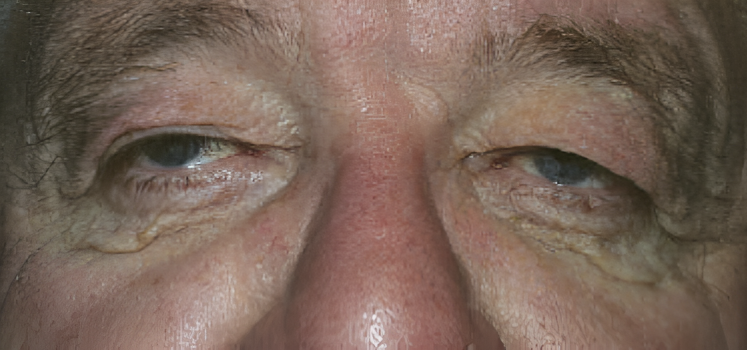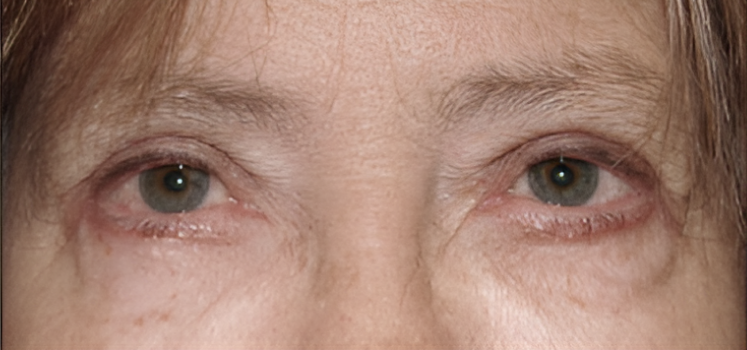- 541-884-3148
- info@klamatheyecenter.com
- 08:00AM to 5:00PM
Eyelid Surgery
A Closer Look
Excess Eyelid Skin
Over time, many people develop excess eyelid skin. Eyelid skin is the thinnest skin of the body, so it tends to stretch.
In the upper eyelid, this stretched skin may limit your side vision. The same problem causes “bags” to form in the lower eyelids.
The excess skin in the upper eyelids can be removed surgically by a procedure called blepharoplasty. It improves side vision and other symptoms. Removal of the excess skin in either the upper or lower eyelids may also improve appearance. If excess fatty tissue is present, it may be removed at the same time.
Ectropion: Outward turning of the Lower Eyelid
Stretching of the lower eyelid from age may cause the eyelid to droop downward and turn outward. This condition is called ectropion. Eyelid burns or skin disease can also cause this problem. Ectropion can cause dryness of the eyes, excessive tearing, redness and sensitivity to light and wind. Surgery usually restores the normal position of the eyelid, improving these symptoms.

A closer look at Eyelid Surgery
Complete eye health includes having healthy eyes and healthy eyelids. Common eyelid problems include excess eyelid skin, droopy eyelids or eyelids that turn inward or outward. These problems can cause eye discomfort. limit vision and affect appearance. Fortunately, they can be corrected with surgery.
PTOSIS: Upper eyelid dropping
Ptosis (pronounced toe-sis) can either be apparent at birth (congenital) or develop with age (involutional). A child with congenital ptosis may tilt his or her head backward in order to see, so the condition does not always lead to poor vision. However, children with ptosis should be examined by an ophthalmologist (Eye M.D.) because they may have other associated eye problems.
Surgery to correct ptosis is commonly recommended in the preschool years to improve appearance and make it easier for the child to see. The type of surgery varies, depending upon how much the eyelids droop.
Involutional ptosis develops with aging. It may worsen after other types of eye surgery or eyelid swelling. Ptosis may limit your side or even your central vision. If ptosis occurs in one eye, it may create an uneven appearance. Surgical shortening of the musde that opens the eyelid will often lead to better vision and improved appearance.

Entropion: Inward turning of the lower eyelid
Entropion also occurs most commonly as a result of aging. Infection and scarring inside the eyelid are other causes of entropion. When the eyelid turns inward, the eyelashes and skin rub against the eye, making it red, irritated, watery and sensitive to light and wind.
If entropion is not treated, an infection may develop on the clear surface of the eye called the cornea. With surgery, the eyelid can be turned outward to its normal position, protecting the eye and improving these symptoms.
Eyelid plastic surgery
Eyelid plastic surgery is almost always performed on an outpatient basis using local anesthesia.
Before surgery, your ophthalmologist will perform an eye examination and make recommendations. Photographs and side-vision testing are often required by insurance companies before blepharoplasty and ptosis surgery.
If you are planning to have surgery, be sure to tell your ophthalmologist if you are taking aspirin or aspirin-containing drugs or blood thinners or if you have a bleeding problem.
This surgery is generally safe; however. as with any surgery, there are some risks:
• The ophthalmic surgeon will attempt to make both eyes look similar. but differences in healing between the eyes may cause some unevenness in appearance following surgery.
• A “black eye” is common but will resolve quickly.
• The eye may feel dry after surgery because it may
be more difficult to close your eyes completely. This irritation can be treated and generally disappears as the eyelids heal.
• Serious complications are rare. The risk of losing vision is estimated to be less than one in s.ooo surgeries. Infections and excessive scarring occur infrequently.
Eyelid plastic surgery procedures can be done safely in an outpatient setting by your ophthalmologist. The improvement in vision. comfort and appearance can be very gratifying.
